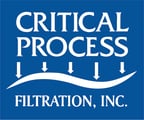A chemical manufacturer was designing a process to create a high-value liquid product.
One of the process steps resulted in a mixture of the liquid being processed with a high level of solids. After that step, the solids were to be removed and the liquid was pumped downstream for further processing.
The Filtration Challenge
At the bench scale, the customer’s process development team was experimenting with a variety of traditional filtration media. Unfortunately, every option they tried fouled in a short period, requiring a large number of filters to process a batch. The customer’s process team concluded that the number of filters required using this approach would be cost-prohibitive. The customer contacted the Critical Process Technical Service team to investigate alternative filtration processes that could reduce the number of filters required and make the process more cost-effective.
Process Review
CPF Application Engineers met with the customer’s process team to perform a step-by-step review of the process. The CPF team asked a series of questions to determine the characteristics of the fluid, what factors might influence the filtration process, and their filtration results up to that point. During these discussions, the following were identified as key considerations:
- The ingredients - including the solids - are added to a blending tank for mixing. The mixture is then pumped directly into the filtration step.
- The customer provided analysis showing that all batches had a solids content of approximately 50%, and that particle size distribution of the solids was consistent from batch to batch.
- The processing conditions - flow rate, temperature, and feed pressure - were consistent and well within filter operating limits.
- The chemical composition of the fluid did not change from batch to batch.
- No filter cleaning or sanitization was required as the intent is to change the filters after each batch.
- The target batch size at full production is several thousand liters.
- The goal of this filtration step is to remove the bulk of the solids from the fluid to allow further downstream processing and purification.
- A solution to the solids removal issue was required to allow the process to move forward.
Application Testing at CPF
The customer submitted a sample of the liquid/solids mixture to the CPF Applications Lab for testing and evaluation. The sample was agitated to ensure that the solids were evenly dispersed in the mixture. A series of potential filters - both those tested by the customer and other alternatives available to CPF - were tested by pumping a constant flow rate through a filter disk and measuring the volume of filtrate up to a defined pressure differential. All filter media tested exhibited the expected level of particle removal, but all fouled very quickly. The solids content was simply too high to be handled by a conventional filter.
The CPF Technical Services Team noted that as these tests were being conducted, the fluid had to be periodically agitated to prevent the solids from settling to the bottom of the feed container. This indicated that an alternative separation technology - such as centrifugation or even simple settling - might be used to reduce the solids level enough to allow the use of conventional filters to finish the job.
Further Collaboration & Testing
The CPF Team asked the customer if any testing had been done to determine how long it took for the solids to settle out of the solution if there was no agitation. The customer had not considered a settling step, preferring to keep the fluid continuously moving through all process steps. As a result of these further discussions, it was decided to perform additional testing to determine:
- If allowing the solids to settle out of the mixture caused any unwanted effects on fluid characteristics
- How long it would take for the solids to settle out to a level allowing efficient and economical filtration
The customer submitted an additional sample for this testing. The CPF Team agitated the sample to ensure that the solids were evenly dispersed and divided the sample into multiple batches. Each batch was then agitated again and then allowed to settle for varying lengths of time. As observed during the initial round of testing, the solids settled to the bottom of the container while the high-value liquid stayed at the top. Analyses of the liquid, along with filterability testing, identified an optimum time for solids settling that would allow the most efficient and cost-effective use of standard cartridge filters to remove the remaining solids and allow further downstream processing and purification.
Solution Implemented
The customer installed a settling tank after the mix tank. Once the solids settle, the high-value liquid is sent downstream using a decanting pump, and the solids are sent for further processing or appropriate disposal. As a result of their collaboration with the CPF Technical Service team, the customer was able to complete the process development and commercialization of their new, high-value liquid product.
